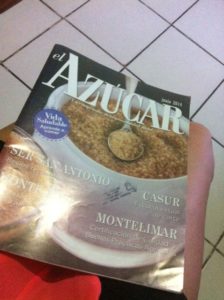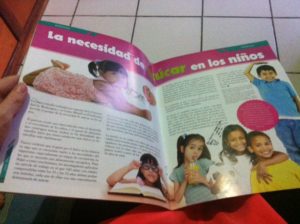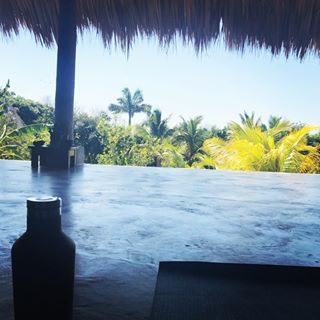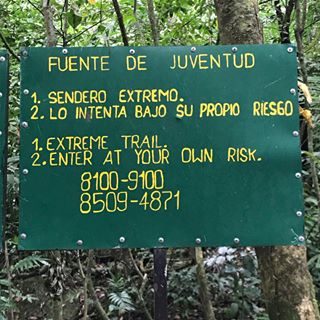Even from my home in rural Nicaragua it is hard to ignore all the recent commotion about sugar. Whether it is through my social media feeds, newspaper articles, or documentaries, it seems that there is a constant stream of headlines; from describing the latest study results showing the negative effects of sugar on our health, to research demonstrating that sugar addiction is real, to data on our current excessive intake, to new government guidelines or policy changes such as the UK’s sugary drink tax, to individuals sharing their stories of how they successfully purged their diet of added sugars, and finally experts arguing over who is to blame and what should be done about it. Like I said, there has been a lot of talk about sugar!
Most of these discussions are centred around North America, Europe and Australia, so you may be easily mistaken that these sugar-related issues are exclusively a ‘first world problem’. But from my vantage point here, in one of the poorest countries in Central America, I can assure you that it is also very much a low and middle-income country problem. From my observations, I may even go as far as to say that the call to action against the ‘evils’ of sugar is even more urgent in Nicaragua. Here’s why ….
- Production

Nicaragua’s main exports include coffee, beef, shrimp and lobster, and sugar. Sugar is produced in the Pacific coastal area of North West Nicaragua, where we live, and dates back to the 16th century. As in other growing regions, this production has been associated with hard labour, repression, and exploitation. In recent years, a high prevalence of Chronic Kidney Disease among Nicaraguan sugar workers has been reported. Although the cause has not been clearly defined, it is hypothesized that this ‘mystery disease’ results from a combination of dehydration due to working long hours in the hot sun, and exposure to toxic substances (it has been claimed that officially-banned pesticides are still being used). What saddens me most about his situation, is that, despite these conditions and life-threatening risks, Nicaraguans are still lining up to be employed in the sugarcane fields because it is a ‘job’.
- Consumption

Nicaragua’s main imports are oil and it’s derivatives, but amongst the top imported commodities are non-alcoholic beverages, sugar confectionary, breakfast cereals, and baby food. I find this ironic, because it means that Nicaragua is importing their exported sugar back in a highly processed form! Prior to the 1990’s, the staple Nicaraguan diet consisted of rice, beans, and corn supplemented by fish, chicken, eggs, other ‘wild’ meats (such as iguanas!), and seasonal fruit and vegetables. Increased urbanization led to an influx of cheap, processed foods such as sweetened beverages, candies, and chips. Processed foods sold in a colourful packaging are viewed as highly desirable, and superior to local (unprocessed) foods. In recent years individuals living in Central Latin America are amongst the highest consumers of sugary drinks in the world. In a recent food survey of 1-3 year old children living in rural Nicaragua, 80% had consumed one or more cups of coffee with sugar, a powdered fruit drink with sugar, or a carbonated soft drink the day before. This has led to an increase in cavities, a complaint that were not present 50 years ago. As in other areas of the world, this shift in diet has been mirrored by increased rates of chronic diseases such as obesity and diabetes.
- Misinformation


On a recent visit to the dental office, I was sat in the waiting area and casually started flicking through a magazine that was on the table, “What the *&%^ is this?” I wondered, as I glanced at the cover to discover that I was reading ‘El Azucar”. A magazine published by the Corporation of Sugar Producers of Nicaragua. The glossy pages were filled with photographs of happy labourers and local community activities supported by the companies, in addition to articles describing the endless benefits of sugar to your health. These included health information communicated by a cartoon character named Dr. Zucarowskly and an ‘abuela’/grandmother character! These characters were not chosen by accident, doctors and the family matriach are traditionally viewed as the authority on health and wellbeing. Unfortunately, I did not discover that I was dreaming and this magazine was not a joke (you can check out all the back publications on their website). Here I was, waiting to see the dentist, reading about all the reasons I should be eating more sugar!
It is not surprising then, that a recent survey on the health education knowledge of Nicaraguans concluded that nutrition knowledge is poor. They found that in matters of health, a fatalistic view is adopted, where individuals believe that “my health is in the hands of God”, consequently they do not understand the connection between what one eats and disease.
While there are government and non-profit led public health campaigns and policies in Nicaragua, with 42% of the population living in rural communities, exposure to and impact of healthy eating messages is limited.
- Access

The diversity of the diets of Nicaraguans living in the countryside is limited by the long distances to local markets and stores, lack of cold storage for perishable items, and a reliance on seasonal fresh produce (out of the growing season, fruit and vegetables are difficult to find and cost prohibitive). In contrast, highly processed foods are cheap and readily available even in the smallest and most remote areas through local ‘pulperias’. These are general stores, which for the most part, are run out of peoples’ homes.
For those who shop at the supermarkets in the cities, the selection of processed foods favours products with a high sugar content, for example, large boxes of the sweetened cereals like frosted flakes and fruit loops cost about $1.50, while small boxes of cheerios or rice krispies (which are difficult to find) are upward of $8. Even some brands, which I am familiar with from the UK and Canada, add sugar for the Central American market. I believe that this is to meet the sweeter taste preference of the population. However, I fail to understand why baby foods sold in Nicaragua all have added salt and sugar. If this is not going to perpetuate a sugar addicted society I don’t know what else will!
So why should you care about my not so sweet story of sugar in Nicaragua?
I hope we all can take a moment to look beyond the current hype and sensational headlines about sugar. While I wholeheartedly agree that we should be taking steps to reduce our consumption, I also recognize that mankind have been adding sweeteners to food for over 2000 years, and so I am sure that we will continue to do so (but hopefully in a more measured way).
As global citizens we should be aware of these wider issues and be responsible for working together towards ensuring the foods we consume (including sugar) are being produced responsibly and sustainably, sold and traded fairly, and marketed ethically. Perhaps most importantly, we should all, wherever we live, have access to reliable nutrition information and to a variety of foods, so that we are able to make an informed choice to eat more healthfully.
I am stepping down from my soap box now …. Thanks for reading!





 the sky is alight
the sky is alight  . I know I’v
. I know I’v

 ... end of our road-tripping adventure.
... end of our road-tripping adventure. 


Leave a Reply